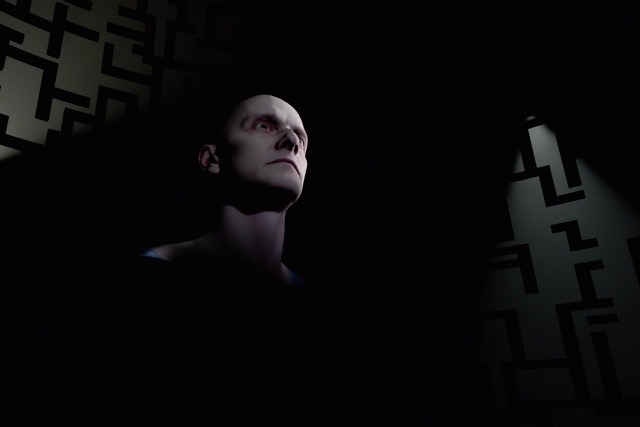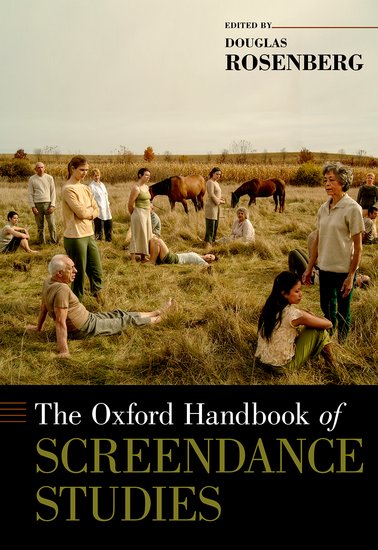![]()
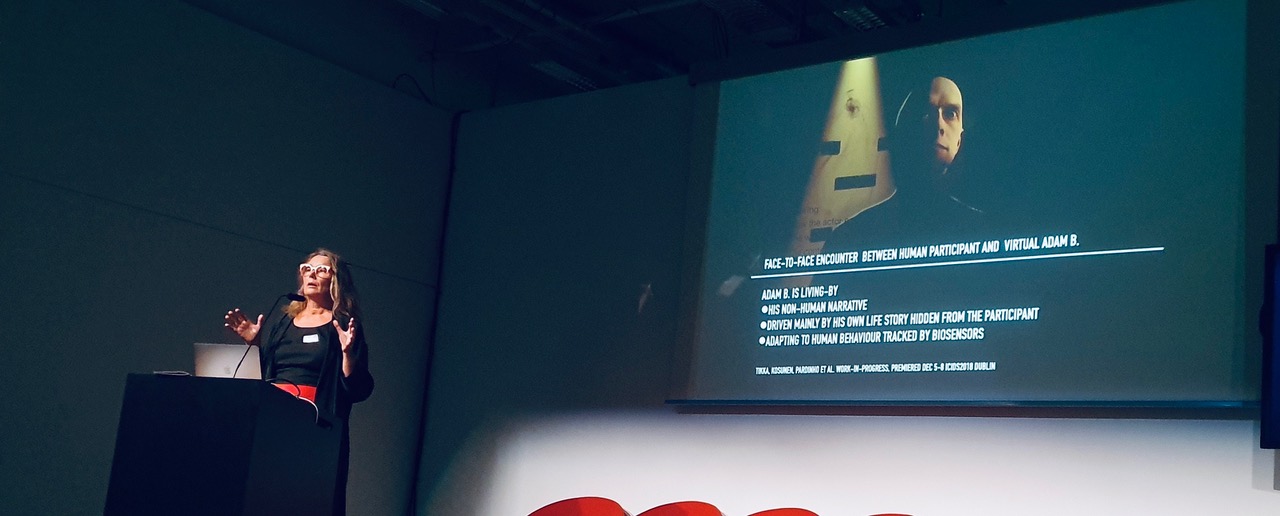
An invited keynote at the two day conference “Actor and Avatar” organised by Professor Anton Rey, IPF, ZHdK August 29th and 30th 2019 at the Toni Areal, Zurich University of the Arts (ZHdK). The “Actor and Avatar” project explores aspects of actor performances particularly aimed to provide facial expressiveness for a virtual character (avatar) and is funded by the Swiss National Science Foundation.
The VR Installation The State of Darkness previously exhibited in the Science Gallery, Dublin (Dec 2018) and in the 360 degrees (Prague 2019) will be presented at the conference. In addition, Enactive Virtuality Lab’s team member Victor Pardinho will run a Master’s Class for ZHdK students and staff.
The keynote by Pia Tikka 29th of August will address a range of topics related to the actors and humanlike virtual characters in the collaborative setting as described under the image.
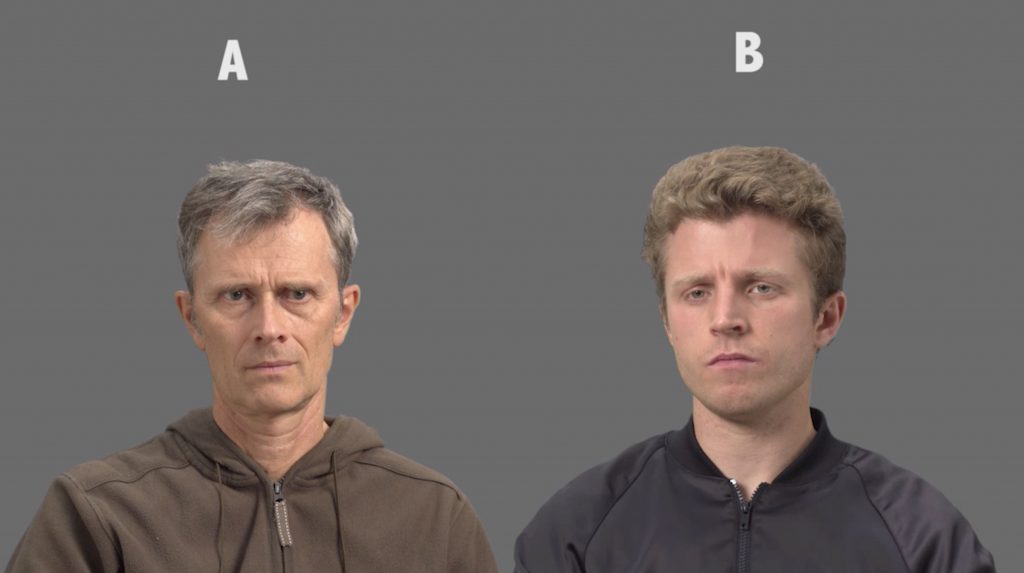
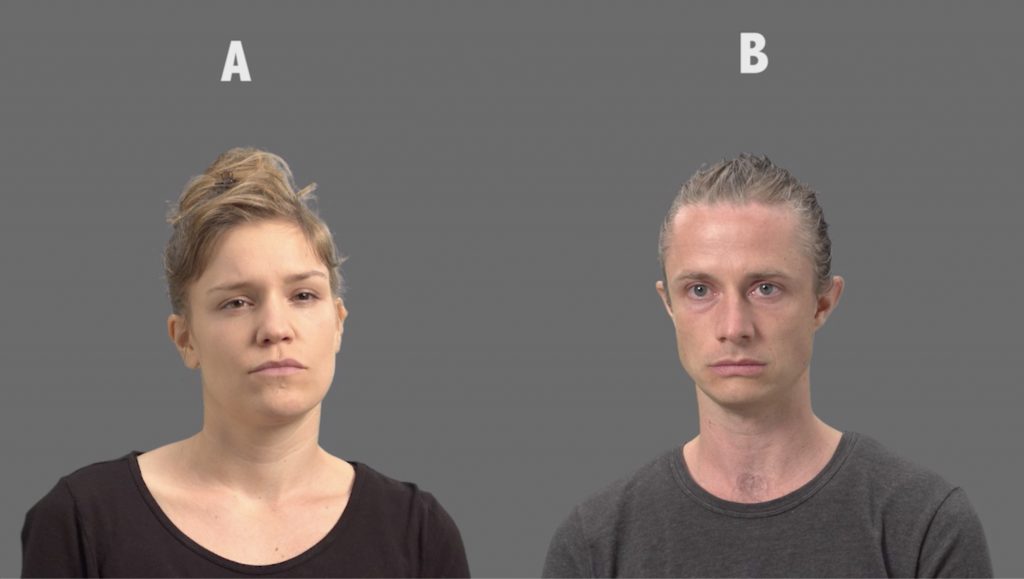
Images: Two examples of the recordings of a dyadic realtime setting where the two actors are seated in front of a Green Screen in the ZHdK IPF Film studio looking at each other through a display in front of them directly connected to the camera in front of the other actor. The other actor takes the role of an asylum seeker’s interviewer (I), while the other actor plays the role of an asylum seeker (AS). Both are listening to the dramatised background story of the latter while engaged in evaluation of each others emotional state within the dramatised context. The performances are applied to humanlike virtual characters in the project Booth developed at the Enactive Virtuality Lab. Actors (upper row) Dr. Gunter Lösel [AS] and Tim Woody Haake [I]; (row below) Corinne Soland [I] and Samuel Braun [AS]. Images©IPF courtesy of Dr. Rey and Miriam Loertscher from ZHdK research group.
Presenters included:


Images: Derek Bradley, Walt Disney Research Studio Zürich (above) and Matthias Wittmann, Digital Domain (below)
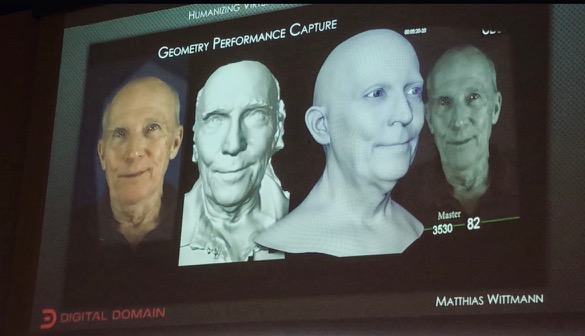
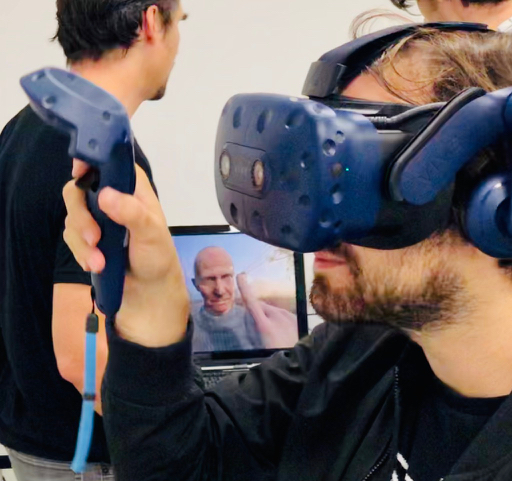
ACTOR & AVATAR EXHIBITION: STATE OF DARKNESS INSTALLATION
 Industry engagement: Derek Bradley, Walt Disney Research Studio Zürich was one of the enactive experienters of facing Adam B in the State of Darkness. Here with Pia Tikka and Victor Pardinho (Sense of Space, Finland).
Industry engagement: Derek Bradley, Walt Disney Research Studio Zürich was one of the enactive experienters of facing Adam B in the State of Darkness. Here with Pia Tikka and Victor Pardinho (Sense of Space, Finland).
